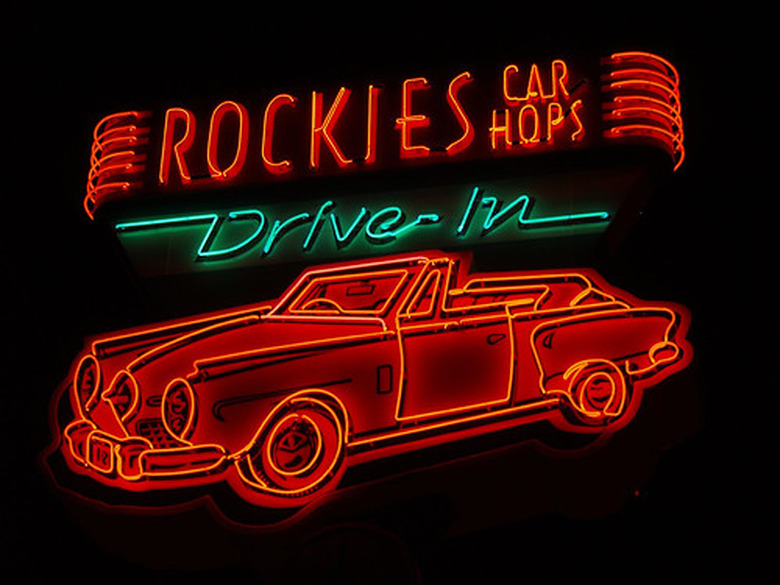What Are The Colors Of Neon?
Neon is a stable gas that is found in abundance in the universe, but is only a small percentage of the Earth's atmosphere. Since the early 20th century, it has lit signs for motels, gambling casinos and diners, yet a popular misconception exists that all brightly lit signs made by glass tubes are neon signs.
Identification
Identification
Pure neon gas glows bright red-orange when placed in a vacuum and an electric current runs in its presence. Neon signs that have colors other than red-orange have other gases included.
Neon Signs
Neon Signs
Although people refer to signs as "neon" signs, if the color of the sign is not red-orange, then it is not neon. Common elements partnered with neon in these signs are argon gas, small amounts of mercury, krypton, helium or xenon.
Other Colors
Other Colors
Argon, when lit, is lavender, but with a tiny drop of mercury, produces ultraviolet. Helium produces orange-white, krypton produces greenish-gray, mercury vapor produces a pale blue, and xenon a blue-gray color.
Uses
Uses
Neon colors, when placed in a vacuum tube, emit a brilliant light, ideal for advertising signs. Other uses include Geiger counters, car ignition timing lights, a coolant and light emitter for lasers and high-intensity beacons.
Discovery
Discovery
William Ramsay, a Scottish chemist, and Morris W. Travers, an English chemist, discovered neon in 1898 after he cooled normal air until it became a liquid, then boiled it and captured the gases that the liquid emitted. Neon, xenon and krypton were discovered at the same time. The invention of the neon lamp occurred in the first 20 years of the 20th century.
References
Cite This Article
MLA
Tilden, Eric. "What Are The Colors Of Neon?" sciencing.com, https://www.sciencing.com/colors-neon-5649133/. 24 April 2017.
APA
Tilden, Eric. (2017, April 24). What Are The Colors Of Neon?. sciencing.com. Retrieved from https://www.sciencing.com/colors-neon-5649133/
Chicago
Tilden, Eric. What Are The Colors Of Neon? last modified March 24, 2022. https://www.sciencing.com/colors-neon-5649133/
